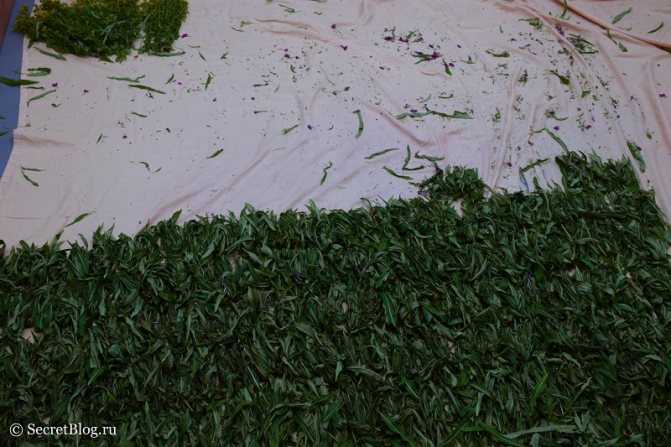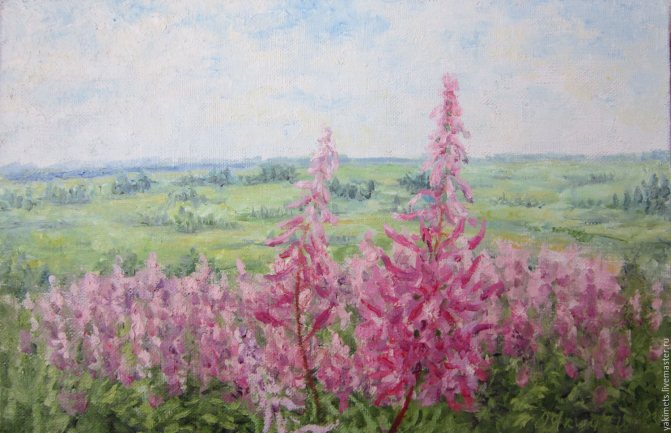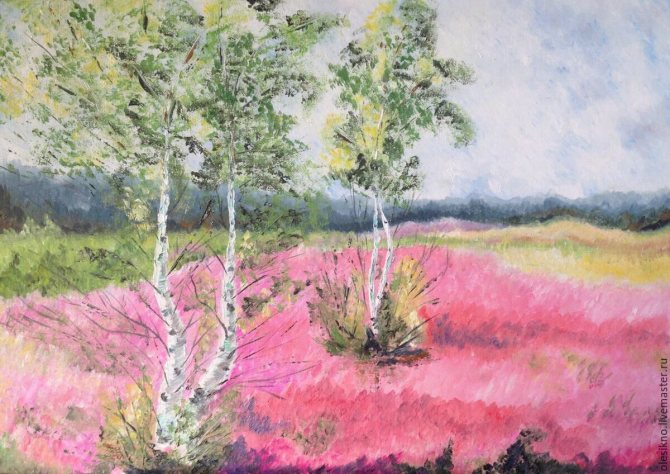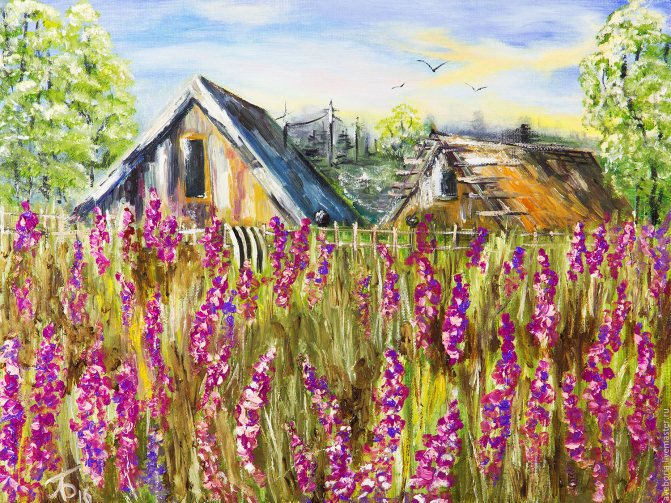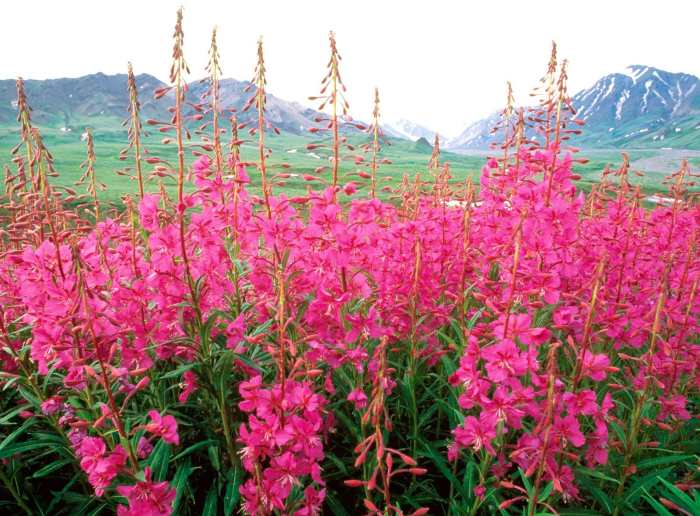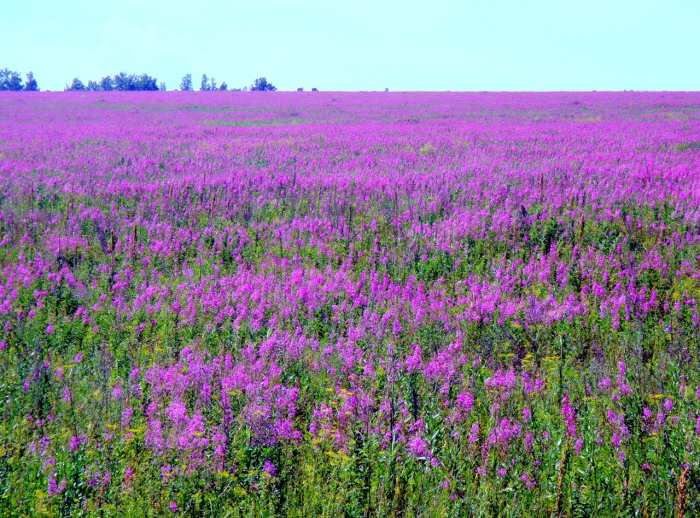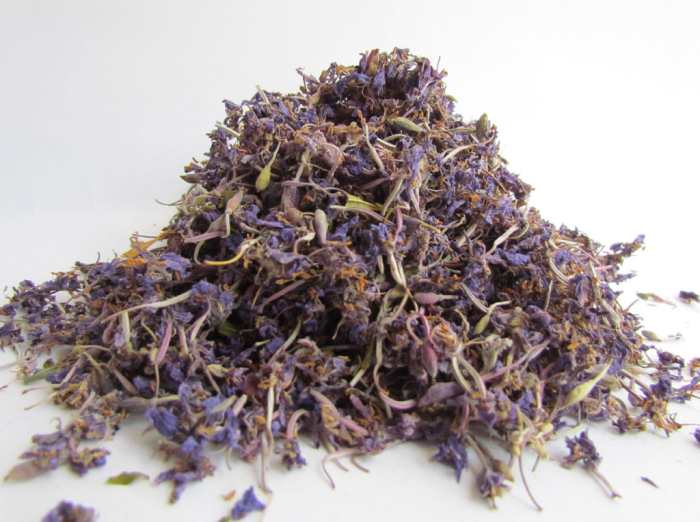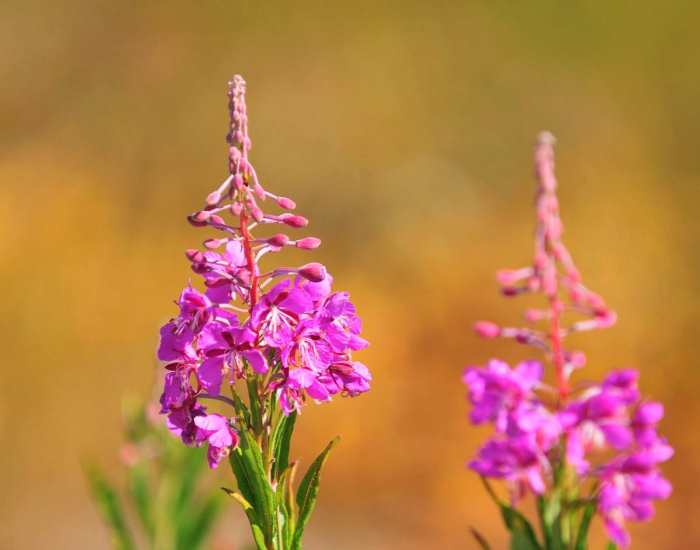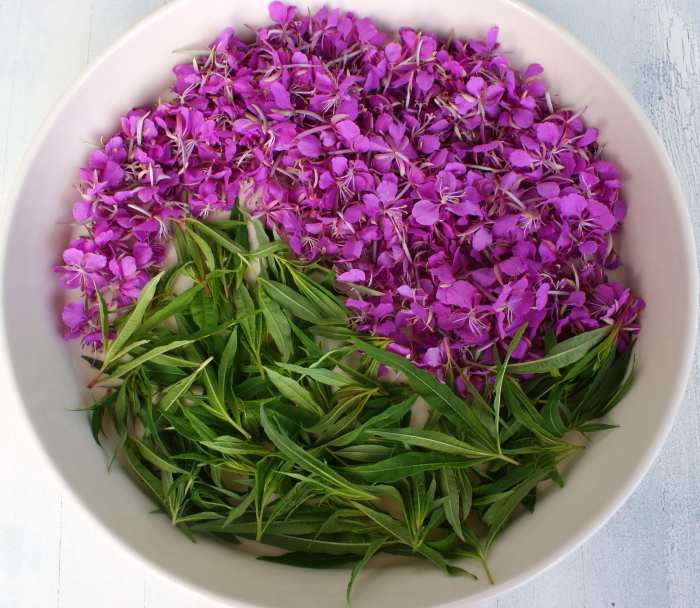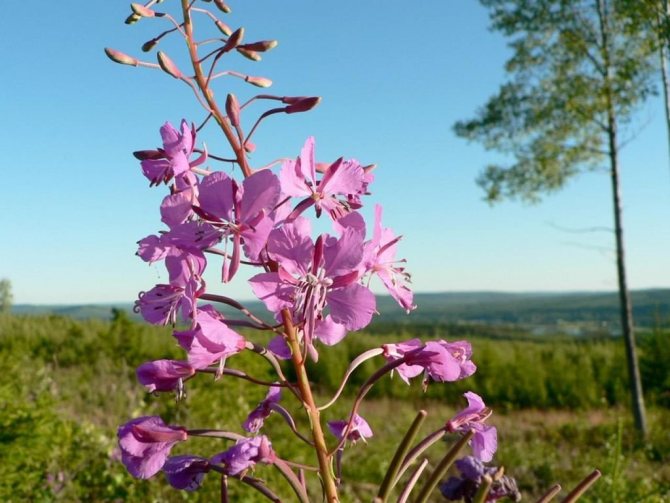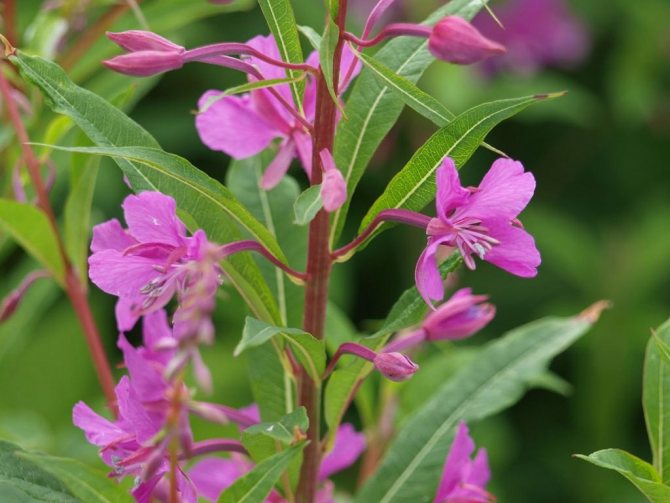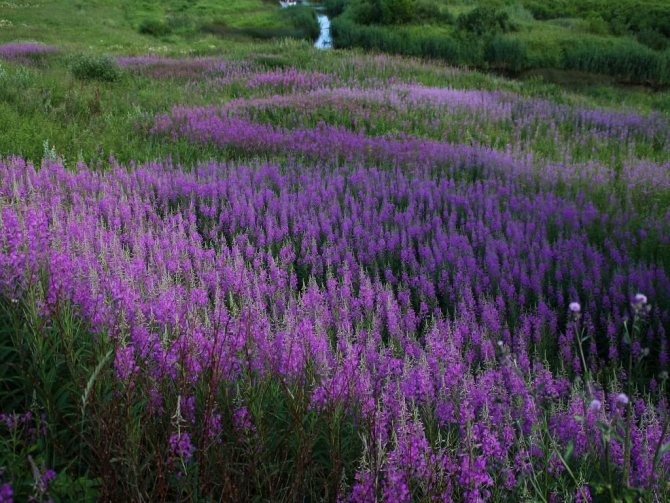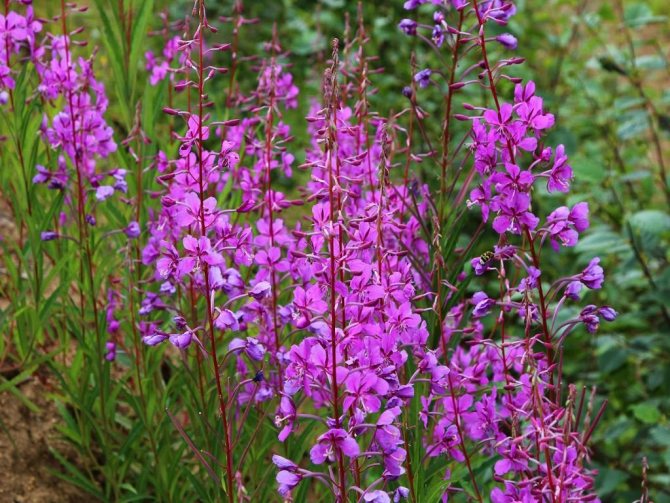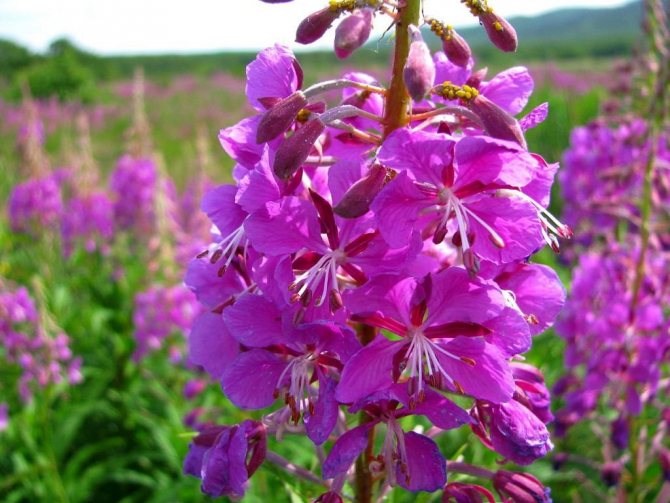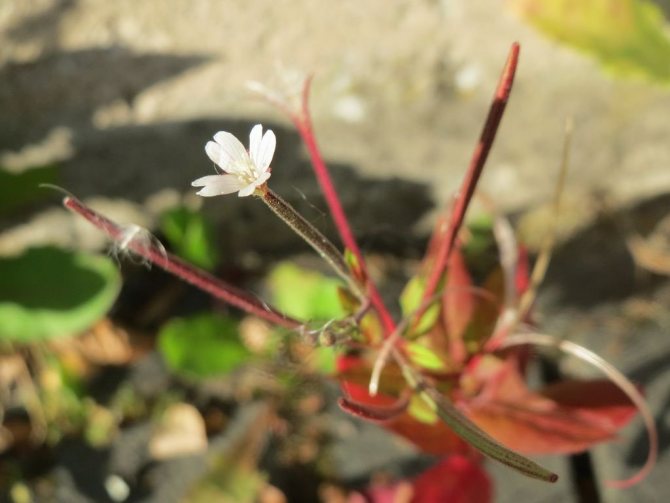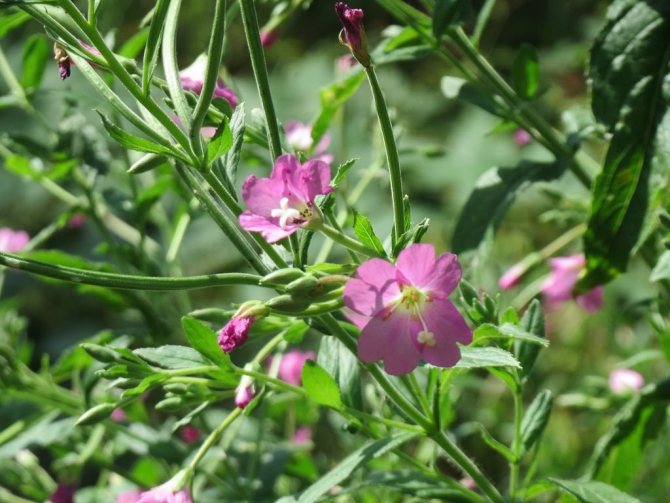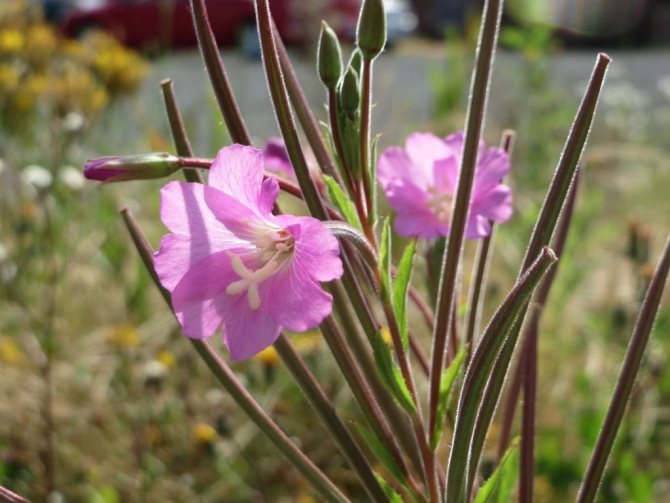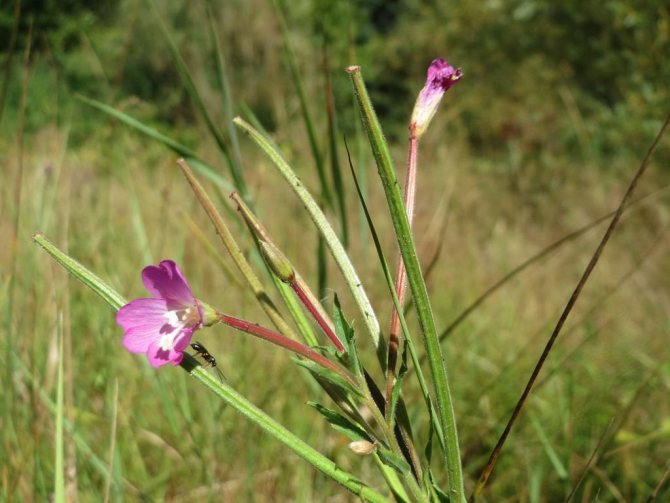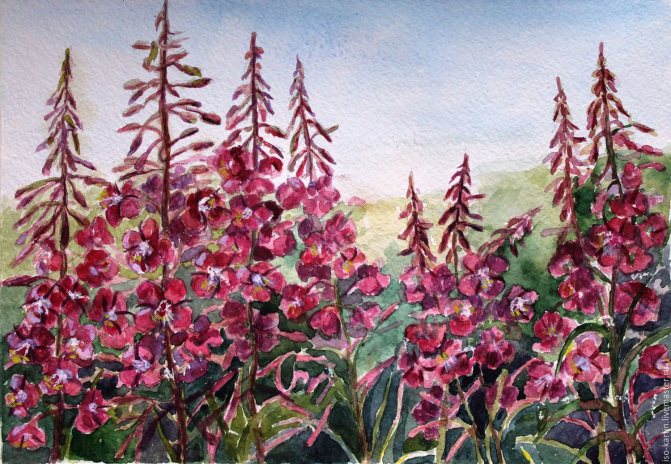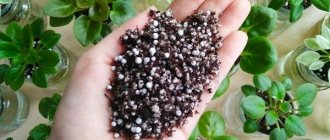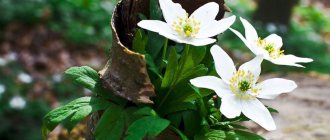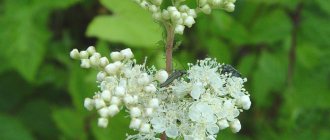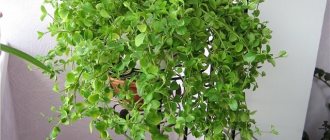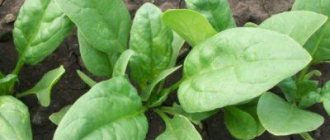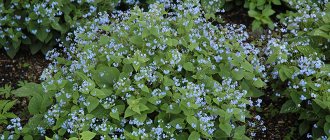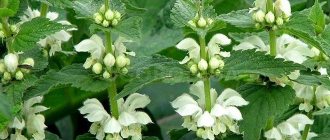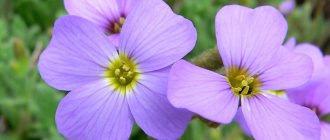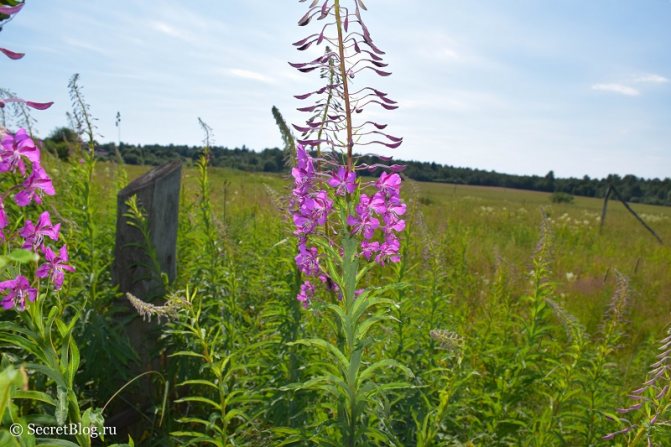
Recently I wrote an article "Ivan-tea - a pantry of health", in which I spoke in detail about the properties and benefits of narrow-leaved fireweed - Ivan-tea. In this article, I will give detailed recommendations on how to properly collect and harvest willow tea. The process of collecting and harvesting fireweed has its own nuances, without observing which you will not be able to get all the benefits and taste characteristics that Ivan tea has in abundance.
Healing properties of Ivan tea - recipes for use
It's hard to believe, but this is a completely unpretentious plant found on forest edges, on the banks of reservoirs, in meadows, in gardens and vegetable gardens.
It is the first to grow on fires, for which the people received the name "fireman" and "fiery grass".
Botanical reference - what does ivan tea look like?
Perennial Ivan-tea (narrow-leaved fireweed) belongs to the fireweed family.
The main morphological features of the plant:
- It has a thick, creeping rhizome with many shoots, and an erect stem up to 1.5 meters high.
- The leaves of the fireweed are lanceolate, long and narrow, pointed at the top.
- Large purple-red, wide-open flowers are collected in an inflorescence, which is a conical raceme 40 cm in length.
- The fruits of Ivan-tea are a fluffy pod-shaped capsule about 8 centimeters long, in which many small seeds ripen.
What Ivan-tea looks like - a photo of a plant
This is the medicinal herb Ivan tea, look at the photo. You often met him on the edges and along the roads, didn't you?
Ivan tea - the chemical composition of the plant
The aerial part of the narrow-leaved fireweed contains many useful substances:
- B vitamins
- carotenoids (precursors of vitamin A)
- polysarachids
- pectins
- phytosterols (in particular, beta-sitosterol)
- organic acids
- flavonoids (quercetin and kaempferol)
- coumarins
- triterpenoids
- tannins (up to 20%)
- negligible amount of alkaloids
What vitamins does ivan tea contain?
The leaves of this plant have a high concentration of macro- and microelements such as iron, manganese, copper, potassium, sodium, boron, calcium, titanium, magnesium and nickel.
As for vitamin C, Ivan-tea contains 6.5 times more of it than lemons and 3 times more than oranges.
In the rhizomes of Ivan-tea there are a lot of easily digestible proteins, polysaccharides, starch, organic acids.
Salts of cobalt, phosphorus and calcium are also present in them, but there are no tannins at all.
In the composition of narrow-leaved fireweed, there are no such components harmful to the human body as caffeine, purine bases and oxalic acid.
What is fireweed
Fireweed, also known as willow tea, belongs to the herbs that grow in the temperate climate of the Eurasian continent. Some species are common in North America. It is mainly found in the forest-steppe, steppe zone.
Most often, fireweed can be found in coniferous forests. In Russia, it grows not only in the middle lane, but also in Siberia.
It is curious that in the American manner the name of the grass sounds like Fireweed, which means - weed of fires. Ivan-chai earned this name because of its ability to restore devastated soil after fires.He prepares the earth for the emergence of new plants.
The grass can grow from 50 cm to 2 m in height. It has a bare, erect stem, sessile, pointed upward and crenate at the edges of the leaves. During flowering, large flowers with 4 petals appear. They can be white, red or pink. The plant has fruits in the form of oblong capsules with many seeds inside.
The chemical composition of narrow-leaved fireweed makes it incredibly useful for the human body. The plant contains:
- Flavonoids that detoxify the body and have a choleretic effect.
- Tannins with anti-inflammatory, disinfecting effects.
- Mucus that relieves spasms, relieves pain.
- A small amount of alkaloids that accelerate metabolism and improve blood circulation, thinning the blood.
- Pectin, which prolongs the shelf life of tea and helps control appetite.
- Vitamins of group A, C, improving eyesight, skin and hair condition, strengthening the body.
- Organic acids and polysaccharides that improve the work of enzymes, metabolic processes in the body.
To watch a video about the plant:
Plant species
A wide variety of fireweed species grow along the European part. In total, the plant has about two hundred varieties. Among them, the following are especially distinguished:
- Narrow-leaved - grows in the European part of Russia, in Siberia. Used for medical, decorative purposes. It is from the narrow-leaved herb that Koporye tea is made.
- Broadleaf is the national symbol of Greenland. Lover of harsh climatic conditions. Lives in arctic, subarctic belts.
- Small-flowered fireweed - used for medicinal purposes. The plant was registered in the pharmacopoeia by Germany in the 70s.
- Hairy, or shaggy, - with slight pubescence all over the stem. It is used mainly in everyday life as a melliferous plant.
- Colchis, or otherwise Caucasian, is a mountain creeping shrub.
- Dodonea is a species common in Europe, Asia, North America.
- Marsh - with a thin stem, narrow leaves. Occurs in swampy areas, tundra zones.
View this post on Instagram
Publication from the Village | Nature | HLS (@merulada) Jun 28, 2019 at 7:11 PDT
Why is Ivan tea useful?
The narrow-leaved fireweed tea is not only tasty, it also has a considerable health-improving effect.
Ivan tea treatment is very effective!
Let's consider the main medicinal properties of Ivan tea:
- Regular consumption of this vitality and immunity-boosting drink
- Helps to cleanse from toxins and toxins, has an antioxidant effect.
- Normalizes the acid-base balance of the blood, improves its composition, raises the level of hemoglobin.
- Improves lipid and carbohydrate metabolism.
- Stabilizes the activity of the endocrine system.
- It has antiviral, bactericidal and anti-inflammatory effects, helping in the prevention and treatment of infectious and inflammatory diseases.
- Normalizes blood pressure.
- It has a positive effect on the functioning of the organs of the male genitourinary system (prostate gland), improves erectile function and increases potency.
- Helps get rid of insomnia, the effects of mental stress and increased excitability, removes headaches.
- It has an anti-inflammatory effect on the intestinal and gastric mucosa, and optimizes the balance of the intestinal microflora.
- It has a diuretic and choleretic effect.
The healing properties of Ivan tea - video
Watch this interesting video, and you will find out that ivan tea has not only medicinal, but also magical properties.
How to dry Ivan tea at home
Having collected the harvest of Ivan-tea, it is necessary to proceed to the process of harvesting it. To do this, you need to follow a number of rules, comply with the instructions, so that the leaves retain all the beneficial properties, vitamins and valuable substances, elements.
For drying plants, an electric dryer or oven is often used, and Ivan tea can also dry out in the sun or in a room where it is not too humid.
Leaves and flowers of the plant, as well as roots and shoots are harvested for further use. The harvested crop must be washed under water, and then dried. Then we begin to dry up the raw materials. It is laid out on paper or cloth and mixed regularly. Then the leaves must be twisted, chopped with a knife or meat grinder, and a blender is also often used for this.
See also: Lemongrass tea - beneficial properties, recipes for brewing lemon grass
Not everyone knows that Ivan tea must be fermented in order to get a high-quality brew. The topic is disclosed in more detail in the article "4 ways of fermentation of Ivan tea at home." The easiest option for fermentation is to oxidize the raw material with air. For this, the prepared mass is left overnight to start the fermentation process. The result should be a delicious tea aroma.
Do not forget about frying leaves and flowers. The raw materials are laid out in a frying pan and at a temperature of 100 degrees is on it for 30 minutes, until the tea leaves take the form of granules.
Then the raw material will need to be dried. This can be done in an oven, oven, or dryer. Ready-made tea leaves can be stored for 2 years, but only if all the rules are followed. Tea should be stored in an airtight container, glassware is preferred.
Fresh harvest before use should be infused for at least a month. The longer Ivan tea is stored, the more saturated its taste and aroma are obtained when brewing.
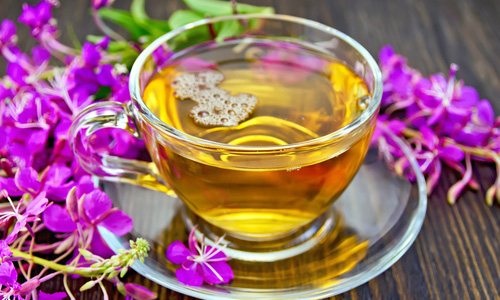

How to harvest fireweed correctly?
For medicinal purposes, mainly flowers and leaves of Ivan-tea are used, much less often stems and rhizomes.
To get a really healthy drink, you need to know how to properly harvest this plant.
When to collect Ivan tea - preparation and collection time
This can be done in several ways:
- During flowering, the entire top of the plant is cut off, that is, the inflorescence and nearby leaves. Dried in the shade, and used in recipes like Ivan-tea herb.
- Flowers and leaves are collected separately, dried in the shade. Use separately, depending on what is indicated in the recipe.
- Leaves and flowers are harvested as raw materials for tea: holding the top of the plant with one hand, with the other hand, with one downward movement, they pluck all the flowers and leaves, to the very bottom.
- Fireweed blooms from June to August, at this time it needs to be harvested.
How to dry ivan tea?
To make good tea from this raw material, it must undergo a fermentation process, like regular black tea.
- The collected leaves and flowers wither, keeping in the shade for 24 hours.
- Then they are twisted in the palms of the palms until the juice appears, placed in a basket and, covered with a wet cloth, left so for 6-10 hours until a fruity smell appears.
- Then spread the raw material in a thin layer on a baking sheet and dry it in a slightly open oven at 100 ° C for 40 minutes.
How and when to collect fireweed
To prepare Ivan tea yourself, follow the instructions:
- Choose an ecologically clean area. These are fields away from carriageways, not classified as industrial zones.
- The entire aerial part of the grass has beneficial properties. It is necessary to cut off the stem, remove the thick lower stems, rough leaves.
- It is best to harvest the narrow-leaved fireweed from July to August during the period of mass flowering.
- It is better to dry plants naturally without exposure to sunlight. Spread the plants in a thin layer on paper in a well-ventilated area, leave for a few days, stir occasionally.
More information about the collection, fermentation and drying of Ivan tea is described in the video:
Ivan tea contraindications for use
This wonderful herb has one contraindication - individual intolerance. In all other respects, a wonderful aromatic drink will only benefit.
Drink Ivan tea and be healthy!
I would be glad if this information is useful to you and you share it with your friends on social networks.
Check out these certified organic teas from around the world too! Collected by hand. Just try it!
Alena Yasneva was with you, Be beautiful and take care of yourself! Until next time!


JOIN MY GROUPS ON SOCIAL MEDIA
This seemingly ordinary herb is endowed with miraculous powers that our ancestors used. The drink made from ivan tea was once used by nobles and common people to gain health and strength. Ivan tea was studied by institutes at the direction of sovereigns and top officials of the state. Ancient warriors restored strength and increased stamina. And in the imperial hospital, the elixir of youth was created. The plant with attractive lilac flowers is actively used by supporters of a healthy diet.
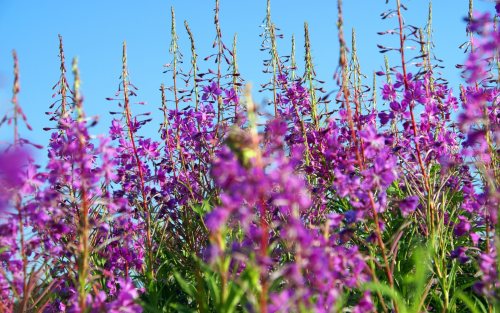

blooming Sally
What weather do you need to collect Ivan tea
According to collectors, tea is harvested only when clear and dry days are established. It is best to start this process early in the morning, before the heat begins, but after the flowers open. It is better to stop the preparations before lunch and you can return to them again by the evening, but for no more than a few hours. Fireweed never gathers after recent rain or dew. Moisture will not allow to properly procure raw materials.
Important! Ivan tea contains 6 times more vitamin C than lemon.
The collection is carried out away from industrial facilities or busy highways. Grass that will be collected from areas with high pollution will not be beneficial.
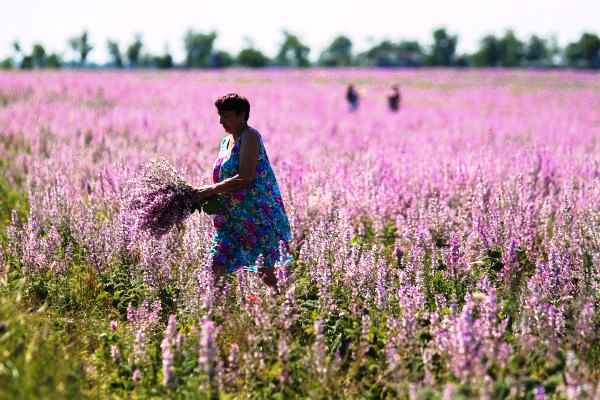

Origin
The areola of distribution covers the Northern Hemisphere. In Russia, willow tea grows in the coniferous forest zone of the European part and in the vastness of Siberia. chooses dry sandstones, humus-rich loams in bright places, on forest edges and glades. It grows along the edge of crops, in ravines and ditches, near water bodies in wet areas.
Ivan tea is the first to "populate" felling sites and fires. After the appearance of shrubs and trees, it dies off. It can often be found in raspberries.


Spread
Fermentation
Tea becomes tasty and aromatic only when the fermentation of the leaves is over. This process must be started. There are three main methods for this:
- Rub dried fireweed leaves in the palms of your hands. After that, place the prepared raw materials in large glass bottles or jars. Cover each such container with a napkin previously soaked in clean water. Move the jars to a dark place where the air temperature is constantly maintained at 25 ° C. Fermentation will end after 36 hours. The finished mixture should be loosened. After that, you can proceed to the final drying process.
- The second method allows you to process a large amount of willow tea at a time. Take a clean linen cloth. Soak it in water. Spread on a flat surface. Sprinkle the leaves on top. In this case, the layer thickness should not exceed three centimeters. This will ferment evenly. Roll the fabric with the raw material into a roll. Try to roll as tightly as possible. Moisten the fabric with water as it curls. It is best to use a spray bottle for this purpose.
Wrap the prepared roll with cotton rope or rubber cord. Roll such a roll on the table with your hands for half an hour. It must also be bent and unbend. Place the roll in a warm place for several hours. At this time, the fermentation process starts in the leaves.
Unroll the roll after three hours. Take out all the leaves and transfer them to jars. Leave the raw material as it is for 49 hours.
The third method can only be used if you have prepared the whole plants.... Divide the plants in two. Squeeze the juice out of the first half.The best way to do this is to use a juicer. Transfer the second part of the herb to a saucepan. Pour the resulting juice there. Place some kind of oppression on top of this mixture. A wooden circle on which the load is installed is excellent as oppression. In this case, the weight of the load should be about 20 kg. In this, the fermentation is completed after 72 hours.
Fermentation is an extremely important process. The taste and benefits of the drink will largely depend on the correctness of its implementation.


Name
Ivan tea narrow-leaved or narrow-leaved fireweed (Chamerion angustifolium) is a herbaceous perennial from the Cyprian family (Onagraceae).
The botanical dictionary contains several dozen names of narrow-leaved willow-leaved tea. For example, plakun, koporka, snake, field leukonia, miller, violin, chrypnyak, nutcracker, sweet clover, bread box, mother pot.
Willow-grass was nicknamed the plant for its leaves similar to willow. For the fact that the grass is the first to fill the fire, it was named a firefighter. When pulling the stem out of the ground, a characteristic sound is heard, for which the grass began to be called a squeak.
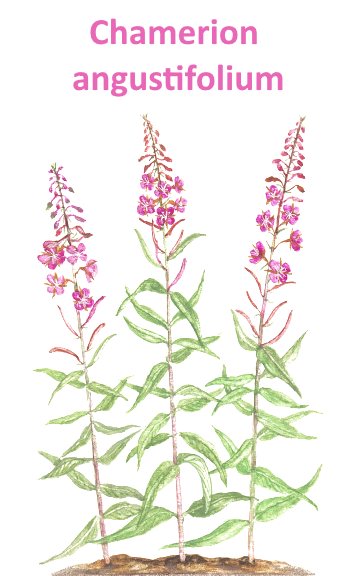

Chamerion angustifolium
Herb picking time
You can assess the degree of readiness by the apical branches. If they appear under the first small flowers, then this signals that flowering is gradually coming to an end. The branches at the tops are white, thin and soft to the touch. The collection time depends on where the grass grows, as well as on the purpose for which the collection is taking place:
- leaves are harvested before and during flowering;
- flowers are harvested during honey production;
- rhizomes are dug out when Ivan's tea has already faded.
Important! Rhizomes are used as flour, grinding to fine dust.
Collection times may vary in different climates annually. Although there is a specific time frame for each collection area, a shift may occur due to the start of an overly hot summer or a prolonged cold spring. Therefore, you need to focus on appearance. Dry summers can result in shorter flowering times.
The leaves gain full strength, and also become rich in nutrients during flowering, but they can be harvested before him if they want to make a drink from young animals. Collectors recommend picking off the leaves along with the tops along the trunk, and breaking off the top. Then the plant will not die, several shoots grow from the broken off stem, which can give another crop. Flowers are collected separately. When properly harvested, the lower leaves and seed pods are never touched, so that the grass can continue to exist.
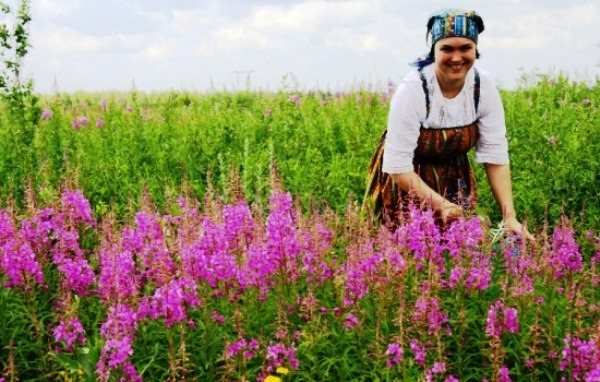

They tried to mechanize the collection process, but this did not bring any benefit. Machine assembly cannot separate the parts from each other, so the collection of Ivan tea to this day is done only by hand. One person can harvest over 20 kg of leaves in one day. Another nuance of the collection is containers for leaves and flowers. Materials that contain artificial components should not be used. Linen or canvas bags work best.
Information! Popular names for Ivan-tea: "home pharmacy", "elixir of life", a remedy for all diseases.
Description
The grass grows to 50-150 cm. It has a straight, rounded stem with a simple or branching top, densely covered with foliage. Long and narrow leaves 5-12 cm long and up to 2 cm wide are planted on short petioles and have a regular arrangement. Along the contour, they are solid or finely serrated, with clearly delineated veins. Lanceolate, shiny leaves are painted dark green on top. The underside is gray-green, pinkish, and sometimes purple-red.
Thick, strong rhizome of a creeping plant. Vertical and horizontal root processes at a depth of 10 cm form a dense network with a large number of buds. They sprout with new shoots and promote reproduction.
During the flowering period, Ivan tea throws out apical inflorescences-brushes 10-50 cm long, as in the photo of the plant, of pale pink, lilac, purple-red or white.
Linear sepals with a corolla about 3 cm in diameter. Perianths are double, four-membered. Flower petals are ovoid. In the middle of a bisexual flower there are 8 stamens, forming two groups of different heights. The pistil has an elongated lower ovary and a nectar ring at the base. The pollen is yellow-green in color.
Ivan tea blooms in the middle of summer and blooms until September. Fruits are pod-shaped capsules with pubescence up to 9 cm long. Inside each one there are many elongated seeds with a bunch of delicate white fluffs on top. They ripen in early autumn and are easily carried by the wind to distant territories. Germination persists for several years.
Descriptions and photos of the plant - small-flowered fireweed
Botanical name: epilobium parviflorum.
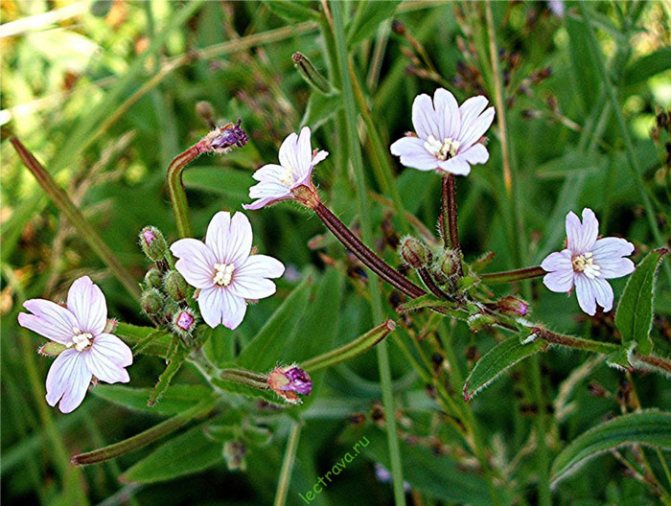

Fireweed is an easily growing perennial plant with a height of 30 to 80 cm. The green leaves are lanceolate, without stems, rounded at the base, with jagged edges and seem to be rather long, about 4-10 cm long. The stem is straight and covered with tiny hairs, the leaves on it are located opposite each other in pairs. Tiny pink or purple flowers appear in summer and bloom within two months. The plant is pollinated by bees and insects.


Fireweed is also called small-flowered hairy fireweed. The botanical name comes from the Greek epi meaning above and lobos meaning petal. The combination of these words indicates the position of the petals above the ovary. The species name "parviflorum" means "little flowers". Its homeland is Europe, including Great Britain, and the habitat of this plant extends from Sweden to North Africa and from West Asia to India, in the United States and Canada it is also common. In these regions, the plant prefers to grow near water, along the banks of streams, in swamps or in wet mountain meadows at an altitude of up to 1400 meters.
Useful Uses
The greatest popularity of Ivan-tea was brought by a hot drink - Koporsky or Russian tea, which tasted as good as overseas teas, and significantly surpassed them in terms of its health-improving effect on the body. For its preparation, the leaves of the plant were harvested, fermented and dried. The production and trade of tea was first established in Koporye, Petersburg province. It was delivered to the imperial palace and to Europe.
Ivan tea is an excellent honey plant with a pleasant smell and ranks first among herbs. In places of mass growth, beekeepers willingly set up hives. The flower produces flower nectar in large quantities. It is rich in glucose and fructose. The sugar content depends on temperature and humidity, but remains high. Honey has a greenish tint and delicate taste. It crystallizes quickly with white grains.
The dried rhizomes were crushed and mixed into flour during baking. This additive completely or partially replaced sugar. An alcoholic drink was also prepared from the roots. The ground part of young plants is used fresh for salads, and when boiled it is used as cabbage or asparagus.
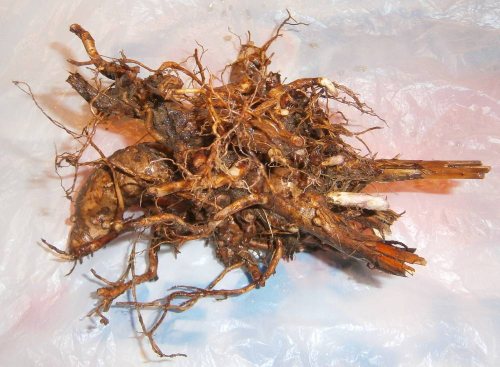

Roots
Economic use
Fresh fireweed and ensiled fireweed are used for livestock feed. Ivan tea is specially sown to strengthen the soil on the slopes of ravines, along road and railroad embankments.
Ivan tea stems have bast properties. From them, fiber was obtained for making ropes and fabrics, and the plant is therefore called wild flax. When the plant blooms, fluff is formed, which has been successfully used as cotton wool to fill pillows and mattresses.
By Ivan tea, you can guess the weather. Before rain and bad weather, its flowers close. In garden design, fireweed is rare. It can be seen in meadows in large parks.
How Ivan-tea blooms
Flowering is the period from the moment the flower rudiments appear until they open.When Koporye tea blooms, it cannot be confused with any other. Plants never exist alone, they are grouped, forming whole glades. Tall stems and conical inflorescences, covered with flowers, make fireweed visible from afar.
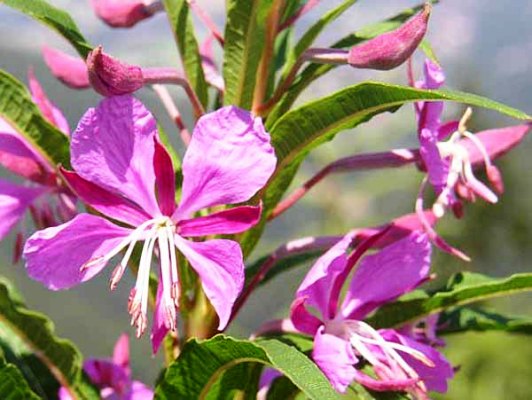

Flowers can be of different shades, it depends on the region of growth. They can acquire purple-violet, pink, hot pink shades, white is very rare. Blooming tea is like a bright candle that reaches up to the sky. Flowers begin to open early in the morning and close before rain.
Information! The seeds are carried by the wind. After entering the soil, they can stay there for several years before taking root.
Koporka flower is a honey plant. Insects pollinate it and collect nectar. During this process, a swarm of bees swirls over the glades. A sweet honey aroma emanates from the buds. Flowering is uneven, which is an additional challenge to harvest. The lower part of the inflorescence opens first, the top blooms later.
How many blooms?
The flowering period is about 30 days. Experienced collectors name a shorter period - up to 20 days. The blanks are made for the first 20 days. After this period, the flowers are no longer suitable for correct harvesting.
Flowering time
Before flowering, the grass takes root in a new territory. Flowering features:
- blooms in the second year of existence;
- blooms from the second half of June to the end of August;
- flowering time varies depending on the region.
The history of this unique herb goes back many centuries, so a sufficient number of legends or beliefs have been collected about it. One of them says that the full power of the flower falls on the days of the celebration of Ivan Kupala. This holiday was celebrated in early July. The beginning of July is a good time to collect raw materials in almost all regions of Russia.
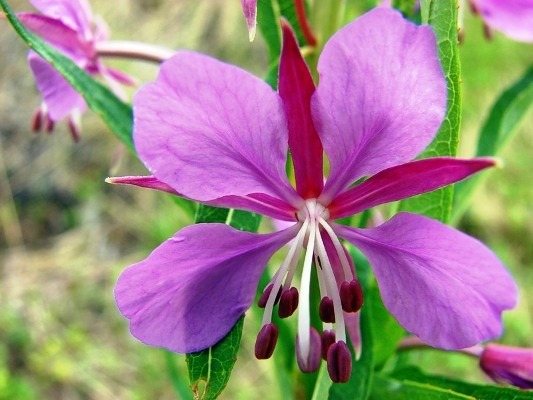

How to grow on the site
The plant is grown in order to obtain medicinal raw materials and to restore the soil. For several years, narrow-leaved fireweed forms dense thickets. The root system develops, old roots die off and become humus, enriching the soil with nutrients.
Before you start breeding this useful plant on your site, you need to know that fireweed does not tolerate neighborhood with other plants. He is picky about lighting and needs a mineralized soil. It is preferable to do an autumn planting, but a spring planting is also possible. For reproduction, seeds and parts of the roots are used.
Growing conditions
Fireweed is a perennial plant, but in colder regions it is often annual unless it is well protected in winter. It prefers to grow in the sun and some growers describe it as not shade tolerant, while others suggest it will thrive in partial shade. This is a simple "marsh plant" that lives near water, and therefore does not tolerate dry conditions.
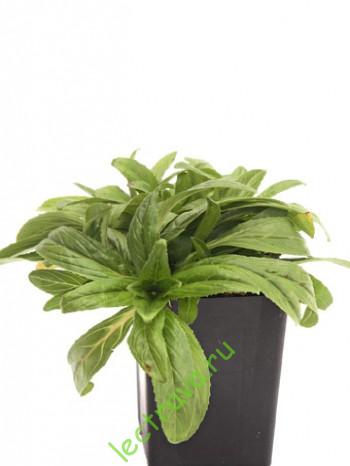

All soils are well tolerated, however it is recommended that the soil be moist and well drained. It is best to grow it as a marsh plant, it seems quite appropriate. Flowers fertilize themselves, flowering continues throughout the summer. The seeds can be sown in early spring directly into the soil or in trays if the weather is too cold. Plants can also be split in the spring in a tray and planted in the garden. Seeds and plants that have not survived the cold winter should be replaced.
Making tea
When dried, willow tea is very similar to ordinary tea leaves. To prepare 1 serving of tea, it is enough to pour 3 g of raw materials with a glass of boiling water or brew 2 tbsp for a family. 0.5 liters of boiling water. Insist in a sealed container for 10-15 minutes. The grass should completely sink to the bottom. The finished tea has a beautiful golden hue and opens up with a bouquet of field herbs. The drink has a light astringent taste.
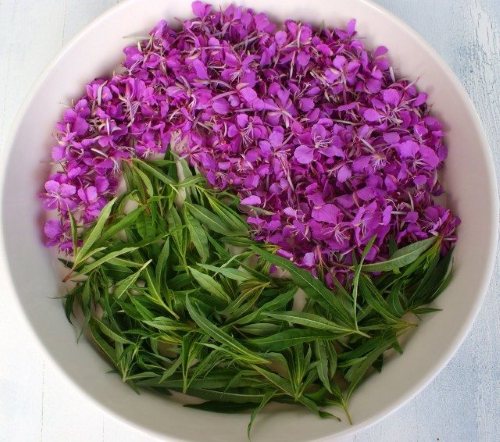

Procured raw materials
For brewing tea, collect narrow, apical leaves of fireweed during the flowering period. Roll up and place in a glass dish. Large leaves must be minced. Cover the dishes with a damp cloth and leave in a cool place for 3 days to ferment. After that, the leaves are dried in the oven until dark brown at t = 110 °. Ready tea is poured into a jar with a tight lid and used as tea leaves. You can store the product without loss of taste for 3 years.
For medicinal purposes, the entire ground part of the plant is harvested. You can dry under a canopy, like other herbs or like tea in the oven.
Unlike the usual black tea, a tea drink made from fireweed does not lose its beneficial properties for up to 5 days. It is kept in the refrigerator and quenches thirst on summer days.
Watch also a video on the topic:
The unique medicinal properties and taste of Ivan tea have been known in Europe for a long time. Drinks based on the plant gave youth and health to people. In ancient times, Ivan tea was called fireweed or Koporye tea. The plant is popular for its sweet fruity aroma and a range of medicinal properties that can cure many diseases.
In our article, we will talk about the beneficial qualities, contraindications to the use of the medicinal herb Ivan-tea, what this plant looks like in the photo.
Place of growth of ivan tea (fireweed)
The areola of fireweed growth is in average temperature conditions, close to the temperature of central Russia. Ivan tea can be found in the central part of Russia and in the regions that border the central region from the north and south.
Fireweed grows on forest edges, fields, it can often be found in the roadside. Ivan-tea does not like dark places, so there is no point in looking for him in the forest. It also does not grow in swampy areas.
Collection time for willow tea (fireweed)
The time of collecting any herb is one of the key and most important factors that ancient herbalists paid very serious attention to. The importance of the collection time is due to the fact that each herb has its own time of greatest biological activity. It is during this phase that the herb must be harvested for maximum benefit from its use.
Russia is a big country. It is conventionally divided into south, center and north. In each district, the time of collection of willow-tea will be different due to the difference in climatic conditions. In the southern part of Russia, the collection time begins in early June, in the central part - from about 15-20 June, in the north - from about mid-July. The collection period for fireweed is approximately 15-20 days. The dates shown are indicative only. In the end, everything will depend on the weather that will be in the harvest year. If the summer is hot, then flowering will begin earlier, if cold - later.
Ivan tea is best harvested in the first days of its flowering, when its flowers are just beginning to bloom. At this time, the fireweed is young - the leaves will contain a maximum of useful biologically active substances.
At the end of flowering, willow tea begins to start up its antennae - on the top of the head, under the very flowers, thin twigs begin to appear. This indicates that the flowering period is over. At such a moment, the leaves of fireweed have the least biological value.
Place of collection of ivan-tea (fireweed)
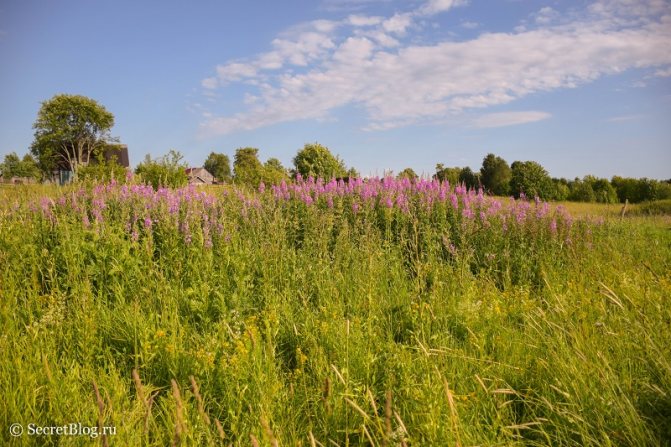

Before you start collecting, you need to find a suitable place. An urban strip or roadside fields are not suitable for collecting fireweed, for obvious reasons - ecology. Ideally, the collection should be carried out 20-30 kilometers from the city. And the larger the city, or if there is still industrial production in the city, the further you have to leave. The flora, like a sponge, absorbs everything in the atmosphere. No need to poison yourself with all sorts of nasty things, collecting herbs in an urban or suburban strip. Hop on a car or regular bus and head out of town. On the way, you will encounter many villages.You can stop in any of them, move away from the roadway, at least a kilometer, and explore the fields and forest edges adjacent to the village. You do not have to look for Ivan tea for a long time, spend at most 20-30 minutes on it - it grows everywhere.


How to collect ivan tea (fireweed)
For a family of three, it will be enough to collect about 30-40 liters of raw leaves. Take large bags from grocery supermarkets. The volume of such a package, on average, is 10-15 liters. Thus, you will need 2-4 packages. You will also need a belt. Anyone will do. Before collecting, place the bag on the belt with both handles and open it. This is the most convenient way - the bag is at the waist level, Ivan tea is about the same, body movements during collection will be minimized, there will be no fatigue. Some wear a backpack on their shoulders back to front, which, as a result, hangs on the chest. With this option, you constantly have to raise your hands up, not a very convenient way. I still recommend a bag on the belt.
Fireweed is collected very easily: take the top of the grass with one hand in the place where the flowers begin to grow, with the other hand grasp the stem 5-10 centimeters lower. Do not squeeze the first hand too much, do not tear off the top of the grass, do not break it. Grasp the stem with the thumb, forefinger, and middle finger of your other hand and slide your hand sharply down the stem from top to bottom. As a result of this movement, the collected leaves will be in the palm of your hand. The movement is very simple, it will turn out right away.
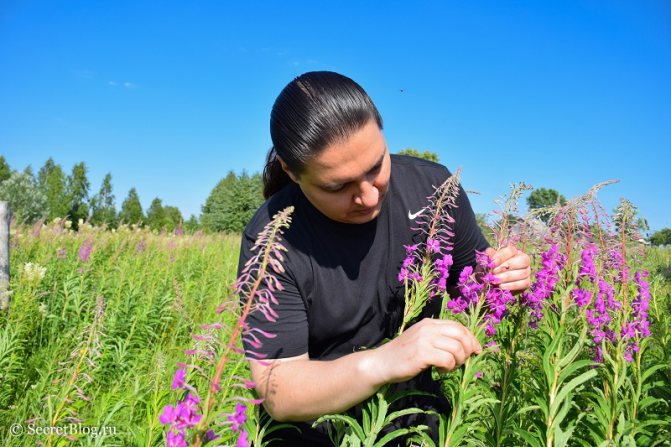

You do not need to collect all the leaves along the entire length of the stem. The higher the leaves to the crown, the more useful they are. Therefore, try to collect fireweed leaves up to about half the height of its stem - leave the lower leaves intact.
Flowers can also be collected, but it is better to do it in a separate package for the reasons that I will discuss below.
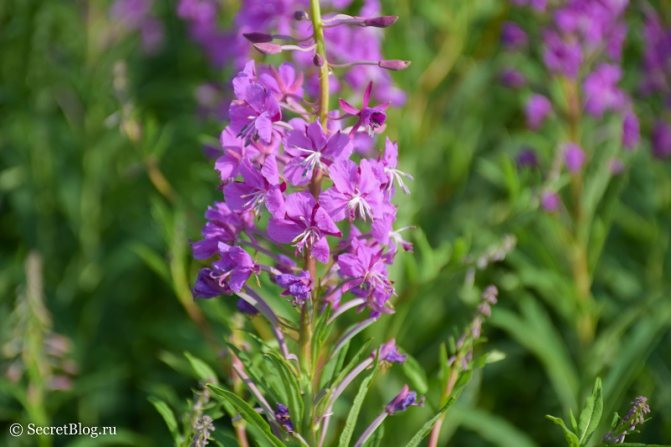

If the willow tea is still young, and it has just begun to bloom, grab the top carefully. Don't break it - let the grass bloom.
Procurement and drying of ivan-tea (fireweed)
After the leaves are collected, they can be rinsed. For this, running cold water is suitable. If you collect fireweed in a place remote from the city and the roadway, then washing it is not necessary. Moreover, ivan tea collected in an ecologically clean area is strongly advised not to wash at all for the simple reason that its leaves contain a lot of pollen, which is carried by bees during pollination. It is also very useful and does not need to be washed off.
A fairly large area will be needed for drying. I collected 40 liters for myself, and the leaves spread over an area of about 3 square meters. Leaves should not be placed on the floor; they need to be littered. You can use paper or cloth. Never use newspapers! Printing ink - pure poison... The leaves will definitely absorb it. Your best bet is to use an old double bed sheet. I dry myself on this one. Spread the sheet on the floor and start scattering the leaves over the area. It is to scatter, not lay. Scoop the leaves from the bag and scatter them on the sheet from a distance of about half a meter. The leaves should lie exactly as they fell. With this method, there will be a lot of free space between the layers - the leaves will dry evenly.


The leaves of the fireweed should lie like this for about 3-4 hours. During this time, they will dry out a little and become soft. Next, they will need to be fermented.
How to ferment ivan tea
Very few people know about this procedure, so before I describe what needs to be done to ferment fireweed, I will tell you about what kind of process it is.
The leaf is a kind of vessel, inside of which there is juice containing all the useful elements. In order for the taste of willow tea to be more pleasant and rich, the cellular structure of the leaves must be injured in such a way that the juice comes out of them. This process is the beginning of fermentation.
Now I will talk about two methods of fermentation of fireweed: rustic and gourmet. I must say right away that the end result in terms of useful properties from the ivan tea brew will be the same in both cases. Fermentation mainly affects only the taste of Ivan tea.
Rustic (simple) way of fermentation of willow tea
After the leaves have withered, sit on the floor next to the sheet. Take a small pile of leaves in your hand and place them between your straight palms. Then start rubbing / rolling the leaves between your palms. Do not squeeze your palms too much - the leaves should not tear, they should just curl. After you perform this procedure on three to five piles, the action will take place automatically - everything is simple here.


A little nuance: in the process of rolling the leaves, you should be in a good mood - think that when you drink tea, fireweed will fill you with health and longevity. This is a very important point - by rolling the leaves, you are in direct contact with the grass. Hands are the most energetically strong zone of a person, through them you can give Ivan-tea absolutely any program. Being in a good mood and thinking about health, you give the leaves a very powerful energy charge, which will greatly enhance the properties of the finished product. By the way, this recommendation applies to the collection process itself.
After that, the leaves are left on the sheet until they are completely dry (a couple of days).
Gourmet way
For this method, I did not take a photo, tk. he dried himself in a simple way. From the description everything will be clear without a photo.
After the leaves have withered a little, they are passed through a meat grinder. The leaves in it are traumatized as much as possible and give a lot of juice.
Depending on how many leaves you have harvested, a fermentation vessel is selected. If the volume indicated by me above was collected (30-40 liters), then you will need an enameled bucket for 10 liters. The resulting mass is laid out in a bucket. All this is left for about 15-20 hours under a tightly closed lid. This is the deep fermentation of Ivan tea, when it is infused in its own juice. The infusion time depends on the ambient temperature. After 10 hours, you need to start looking under the lid from time to time. At the very beginning, the mass will have a pronounced herbaceous smell. As you infuse, the smell will change to fruity. As soon as you feel a distinct smell of fruit, the fireweed is infused and ready to dry. At a temperature of 22-25 degrees, on average, it takes 16 hours for this stage.
Very important do not overexpose the leaves in the bucket. Otherwise, they will ferment and will no longer be suitable for making tea - they will have to be thrown away.
Next, the mass is laid out on an enamel baking sheet, after which it is sent to dry in the oven at a temperature no more 40-45 degrees. If the temperature is higher, you will kill a huge amount of nutrients in Ivan tea. If you have an electric oven, then setting the desired temperature will be easy. If it is gas, then it is necessary to make the gas in the oven to a minimum, place a baking sheet in it, and do not close it during the drying period.
Ideally, a dehydrator should be used. In it, the temperature regime can also be adjusted very accurately, and in addition to this, a ventilation system is provided in the dehydrator, due to which the grass will dry much faster with the least losses for it.
If, in addition to the leaves, you also collected willow-tea flowers, then dry them separately from the leaves. They do not need to be rolled like leaves or sent to a meat grinder. The flowers just need to be dried, they dry quickly.
Ivan tea packing
If you used the rustic method, then the dried fireweed can be placed in a regular cotton pillowcase.
For the gourmet method, you need glass jars. After the ivan tea is dried in the oven, it must be allowed to cool completely, then scattered over the jars, after which it is necessary to tightly close the jar with a lid.Ivan tea flowers must be mixed with the bulk. When brewing, the flowers will give a light aroma to tea, and its visual appearance will be more interesting (if you brew fireweed in a transparent teapot).
With the rustic method, willow tea will not have time to change its taste to fruity, and will have a herbaceous hue. Some people may not like it, so you can add mint or ginger to it.
The gourmet way will allow you to fully enjoy the taste of Ivan tea. After drying, its color will be black, the tea leaves will have the same color - just like in ordinary black tea. But once again I want to emphasize that if you go too far with the temperature during drying in the oven, the amount of nutrients in fireweed will decrease by orders of magnitude, and it will turn into ordinary tea, the benefits of which will be only in its taste characteristics.
If you want to use ivan tea exclusively for medicinal purposes, then the first option will be the most optimal. If taste is also important, choose the second.
Enjoy your tea!
Subscribe to our newsletter and be always up to date with new articles:
Tags: preparation of ivan-tea, ivan-tea, fireweed
«Previous post
Where does narrow-leaved fireweed grow
It is a perennial plant of the Cyprus family. Grows throughout Europe in temperate climates. Prefers sandy soils, places on forest edges, along fields. In areas of forest fires, in clearings it appears first, where it is collected for harvesting.
Ivan tea has tall stems with inflorescences in the form of a bright brush - from light pink to dark purple in color. There are 14 known plant species, which have similar properties, practically do not differ in chemical composition.
What this medicinal plant looks like, see the photo below:
About the dangers of fireweed
There is no absolute ideal in everything! This is also true for such medicinal herbs as fireweed. This plant is mostly beneficial. However, it should not be overlooked that, like any product, this herbal ingredient may be contraindicated in some cases.
For example, fireweed should not be eaten:
- with individual intolerance to the product;
- during the acute phase of food allergies and hay fever;
- in the acute period of gastric ulcer with a tendency to perforation;
- with increased blood clotting and a tendency to thrombosis;
- with the progression of urolithiasis.
There are a number of pathological conditions during which it is not recommended to drink tea based on fireweed. Therefore, during illness and in the presence of chronic health problems, it is better to consult with a doctor about the permissibility of drinking Ivan tea.
Also, a conditional contraindication can be considered children's age up to 3 years, the period of gestation and lactation in women (consultation is needed).
The rest of the plant is considered very useful. It is important to observe the measure and be careful about the choice of raw materials for the preparation of a delicious medicinal drink. It is worth remembering that the fireweed that grows in an ecologically clean area is useful. This means that it is advisable to collect grass away from roads, industrial enterprises and other objects that actively pollute the area.
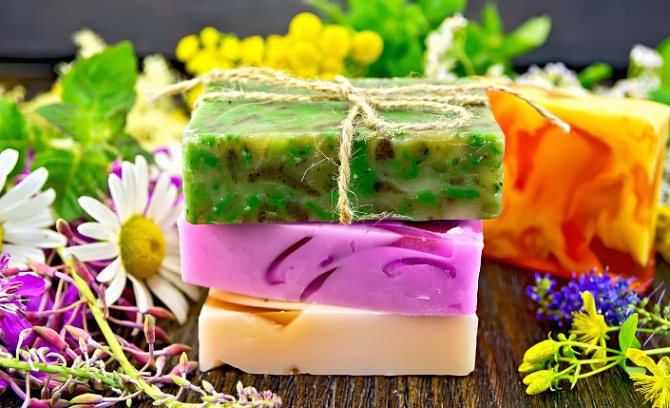

What is useful for women, healing qualities
What is the use of ivan tea for women:
improves skin condition, evens out complexion;
fights infections of the urinary tract, genitals;
normalizes hormonal levels (during the monthly cycle, with menopause);
strengthens hair, nails;
promotes a healthy pregnancy, improves the quality of breast milk during breastfeeding;
accelerates the recovery process of the body after illness or childbirth.
Drying
If fermentation is complete, the leaves will feel soft to the touch. They should resemble rubber. Then you can dry them. There are two main ways:
- In the sun. Remove the leaves from the container in which the fermentation took place.Spread them out on a linen or cotton cloth. In this case, the layers should be thin enough. Place raw materials in direct sunlight. Occasionally, the fireweed should be turned over. This will allow the leaves to dry evenly. This method of drying processing is time consuming. But it allows you to keep the maximum of nutrients in the leaves.
- A faster way to dry is to use the oven. Place the leaves on a baking sheet lined with parchment paper. Place it in a 110 ° C oven. At the same time, try to mix the fireweed more often. Gradually, it will acquire the required color. The readiness of the product will have to be determined by eye. To a large extent, the cooking time will depend on the moisture content of the raw materials.
The finished tea should decrease in volume by five times. At the very end of processing, the raw material must be calcined. To do this, increase the temperature and keep the grass in this state for a while. This process will significantly improve the quality and taste of the tea. Remember to keep the oven door ajar during the entire drying cycle. This method will allow you to properly dry the grass at home. This does not require any additional equipment.
If you want to give the drink a special unique taste and attractive color, then you need to add dried flowers to it. The way to prepare them at home is much easier, since they do not require fermentation. It is enough to spread them out on clean paper separately from the leaves and place them in a dark room. Make sure they are not exposed to sunlight.
Collection, methods and rules of procurement
It is necessary to look for willow tea on the forest edges.
A young forest is suitable, in the place where there was a sand quarry, since the plant loves sandy soils.
Occurs near young pines and firs. It can be found near fields with cultivated plants: ivan tea usually settles next to them.
All parts of the plant are harvested during flowering from June to August (in the morning, in dry weather), and then dried in a darkened dry room or outdoors under a canopy without access to direct sunlight.
For this, a fresh plant is laid out in an even layer, periodically turned over for uniform drying and prevention of decay.
On the pages of our site, you will also learn everything about black currant, its beneficial properties and contraindications for use.
Is red currant good for our health? This berry is known for the fact that it contains a large amount of vitamins and nutrients. Find details here.
A few words about the healing properties of lingonberry leaves. How to make a healing drink, popular recipes of traditional medicine can be found here: https://foodexpert.pro/produkty/travy-i-spetsii/listya-brusniki.html.
What does fireweed look like
This plant is very bright and attractive to look at! If you have ever seen sharp flowering arrows of red, pink, white, located on juicy green stems, densely covered with long pointed leaves, then most likely it was the very same fireweed. This herbal plant grows densely, covering rather voluminous areas. Due to this arrangement, whole "carpets" of ivan tea are formed in the open spaces of suburban natural landscapes. Such a picture can be safely called a breathtaking natural landscape that you will want to admire again and again!


How to brew and take it
From ivan tea for drinking, infusions (tea) and tinctures are prepared:
Medicinal infusion
To prepare the infusion, take the leaves, which are poured with boiling water (2 teaspoons of leaves per 250 ml of water), insist for 30 minutes.
You can then add sugar, honey, lemon, or mint to enhance the flavor and effect. The infusion retains its properties for several days.so it can be cooked and stored in the refrigerator.
Leaves can be reused - they retain their useful qualities.Tea is used to combat alcoholism and sleep disorders.
Regular consumption boosts immunity, improves well-being, gives a surge of vivacity and strength. It can be used externally to disinfect wounds, accelerate their healing. The eyes are washed with tea to get rid of conjunctivitis, eye fatigue or to remove a speck. It is useful for relieving inflammation of the organs of vision.
Preparation of the tincture
For cooking, it is better to take a freshly chopped plant. For half a glass of the plant, you need 300 ml of alcohol or vodka. Both ingredients are mixed, insisted for 2 weeks in a cool, dark place, shaking occasionally.
Take a teaspoon of water dissolved in a glass three times a day. Suitable for external use for disinfection of woundselimination of inflammatory processes caused by fungal or bacterial infections.
Fermented
To improve the taste and medicinal qualities, fermentation of willow tea leaves is performed.
The plant acquires a pleasant fruity aroma, its anti-inflammatory properties are enhanced, oxalic acid is destroyed, which aggressively affects the digestion processes.
The product is better absorbed, becomes more nutritious.
You can make fermented willow tea at home. To do this, fresh leaves are passed through a meat grinder. or twisted with palms, rubbing the leaves until the juice flows.
Then the raw materials are laid out on an enameled dish with a layer of no more than 5 cm, covered with gauze dipped in clean water. In this state, fermentation begins, which accelerates when the temperature rises to + 25 ... + 30 ° C.
Lemon is an affordable miracle
Discussion: 22 comments
- Novel:
06/20/2016 at 4:49 pmThanks for the good advice. Everyone should use it. Ivan is the best tea for Russia!
Reply
Vedic:
06/20/2016 at 6:09 pm
No doubt about it!
![:)]()

Reply
- Igor:
07/12/2019 at 4:50 am
Collecting for 15 years. The fermentation and meat grinder option is the best. We get granulated tea. Smelling AWESOME.
Reply
06/26/2016 at 5:13 pm
hello. what amount of tea can be consumed per day. are there any contraindications.
Reply
- Vedic:
06/27/2016 at 8:16 am
Hello. There are no contraindications. I, in any case, have not heard of those. I drink as much as I drink, depending on my mood. The record so far is 3 liters)
Reply
07/04/2016 at 9:43 pm
Thank you for the detailed description of Ivanchai fermentation. I tried it. It turned out fragrant. Recomend for everybody.
Reply
07/07/2016 at 5:44 pm
Is it not possible, instead of drying in the oven, to dry in the same way as in the initial stage on the sheet?
Reply
- Vedic:
07/07/2016 at 6:50 pm
I described a simple (rustic) way. It just describes what you are asking about. Oven fermentation is done for flavor. After this process, the taste of Ivan tea changes dramatically - it becomes fruity. When dried without fermentation, the taste will be herbal and retain the maximum benefit, unlike fermented tea, in which, in fact, apart from the taste, there is little that is useful due to heating. I'm just drying the leaves.
Reply
07/10/2016 at 6:14 pm
The fermentation process is an oxidation process with the simultaneous removal of moisture residues from the leaf structure. It takes from several hours to several days. In short, almost everything is on the case, except for one ~ it is MANDATORY to wash after collection, mice, slugs, snails, caterpillars, bugs, etc. regardless of the distance from the city!
Reply
- Mikhail L:
06/16/2019 at 5:07 am
Fermentation is a complex fermentation process thanks to microorganisms. Therefore, if we wash the product, we remove the microflora and the fermentation simply will not start.
Reply
Vedic:
06/16/2019 at 6:14 am
Fermentation is triggered by bacteria in the air. This is the same process as, say, making a leaven.
Reply
07/20/2016 at 6:01 pm
I read that you can ferment in the first way, but dry in willow baskets. Then the taste becomes fruity, and the vitamins are not killed. But I haven't tried it myself.
Reply
- Vedic:
07/20/2016 at 7:18 pm
Fermentation takes place only when heated. So you have to choose - either benefit or taste.
Reply
07/28/2017 at 11:46 am
I read the article and was inspired by the idea of making tea. Before that I did not know about such amazing properties of Ivan-tea.I prepared Ivan-tea both in the country way and in the way for gourmets. And dried the flowers. The result is two teas that are completely different in aroma. Yesterday I finished the process of drying and packing. I am very satisfied. For which - a huge gratitude to you !!!
Reply
08/04/2017 at 8:15 pm
Hello. Be so kind as to answer a couple of questions about the preparation of tea: - if the flowering is already ending and "ivan-tea begins to start up its antennae" is it still possible to collect ivan-tea? and then wait a long time for the next year)) - I did not understand from the text, i.e. the rustic method ends after twisting between the palms, and then completely drying, and the gourmet one is: a meat grinder-bucket-oven, did I understand correctly? - if suddenly I somehow do not prepare the tea correctly (for example, I will stand the wrong time, or I will make something "wise" with fermentation))), will it harm the body?
Reply
- Vedic:
08/07/2017 at 11:16 am
Hello. 1 - it is better to collect fresh, antennae - this is already outgoing Ivan tea. 2 - yes. 3 - if you overexpose during fermentation, then willow tea will be spoiled.
Reply
Denis:
08/18/2017 at 3:58 pm
Did I understand correctly that with the second method of harvesting (gourmet) all useful properties are lost? Or are properties lost in case of overheating?
Reply
Vedic:
08/18/2017 at 4:21 pm
Yes, a large proportion of useful properties are lost. But if it is dried in an oven heated to 38 degrees, then fermented tea will also have a very great benefit + taste.
Reply
12/05/2017 at 2:21 am
They didn’t ask me .. but if you will… It is better to collect tea leaves at the beginning of flowering, before setting the seeds! I did not understand what kind of "antennae" we are talking about, but when the seeds begin to "puff", one must be very careful so that the fluff does not get into the tea. Wash the leaves as desired and if visually soiled. After scattering the leaves in an even layer, wither for several hours (only wither, but do not dry out!). Further preparation for fermentation. The easiest way is to pass the leaves through a meat grinder with large holes. this will make a granulated tea.
Reply
12/05/2017 at 1:57 am
There is nothing complicated with the preparation of "Ivan-tea". You can make black tea, (quite strong), you can green, leaf, or granular. We are stocking two 5 liter pots of ready-made (black) tea for the winter. Granulated is "stronger" than sheet, but it also needs a little more raw materials.
Reply
06/25/2018 at 6:58 pm
Thank you, a lot of useful things! All the best.
Reply
07/15/2019 at 1:04 pm
I collect when the buds are formed before flowering branches. It is more convenient to wash this way. I dry it. I pick off the leaves, wither overnight. I ferment with my hands, twisting them into balls between my palms. Drying in a fan dryer at 30 degrees is almost instant. I store the balls in a food grade plastic container. I brew 3 balls on a teapot (400ml). Fruit and herbal taste. Optionally add fermented tarragon (tarragon). Everything else depends on the situation when St. John's wort, when thyme, mint, etc. But I like it more with tarragon. I tried it through a meat grinder, I didn’t like it, some kind of aftertaste appeared, it’s not for nothing that everything is herbal, like salad dressing, it is recommended to handle only with your hands.
Reply
Application in traditional medicine
Over the years of using the plant in folk medicine, several useful recipes have been created:
Healing ointment.
Fresh leaves of ivan tea are ground to obtain a gruel, which is mixed in equal proportions with goat oil.
The remedy helps with acne, psoriasis, joint pain, neuralgia. It is enough to rub the ointment into the sore spot.
Roots. Fresh roots are cut into small pieces and chewed like chewing gum. They help with inflammation, bleeding of the gums.
With prostatitis, urolithiasis. For cooking, take 1 teaspoon of ivan-tea leaves, propolis and cognac, 1 tbsp. l. honey.
All ingredients are mixed, take 1 tbsp. spoon 1 time per day. The tool helps to dissolve kidney stones, get rid of prostatitis.
Acne tonic. Ivan tea tincture is mixed in equal proportions with camphor alcohol. The resulting preparation is used to lubricate the skin of the face to combat acne, pimples, and blackheads.
The tool normalizes the secretion of the sebaceous glands, removes oily sheen, destroys infections on the face.
To combat smoking and alcoholism... An infusion of ivan tea and mint is being prepared - 1 teaspoon per glass of boiling water.
The product is insisted for 15 minutes, 250 ml is taken 5 times a day. The tool removes nicotine and alcohol from the body, relieves withdrawal symptoms. Helps sleep, calms the nervous system.
To improve vision. For cooking, take ivan tea and eyebright in a ratio of 1: 2. Both products are placed in a thermos, poured with boiling water. Insist 2 hours. Drink half a glass before meals.
There are even more interesting facts about the dangers and benefits of ivan tea, its beneficial properties for health, what are the indications and contraindications for the use of leaves and flowers of a medicinal plant - in the video:
Ivan tea has medicinal properties that can improve the health and well-being of people of all ages. It is enough to drink one glass of infusion per day, which is prepared like regular tea, to get a portion of health.
Especially he useful in winter with a lack of vitamins and mineralscan be given to children for normal healthy development. The plant is easy to prepare yourself or buy at the pharmacy.
Useful properties of narrow-leaved fireweed
Each type of willow tea has a special effect on the body. The most complete spectrum of medicinal qualities is possessed by narrow-leaved fireweed. Replacing regular tea with herbal decoction, you can feel positive changes in the body:
- increased immunity, immunity to infections;
- improvement in the work of the respiratory system;
- healing of ulcers, treatment of poisoning, stomach problems;
- anti-aging effect, improved cell regeneration;
- preventive action against tumors;
- cleansing the body, increasing the speed of metabolic processes;
- improvements in the work of the endocrine system.
Narrow-leaved fireweed has a tonic effect on the entire body. Often tea is prescribed for recovery after severe long-term illnesses.
Herbal tea has a positive effect on the nervous system. It relieves tension, stress, normalizes sleep, making it stronger and longer.
The healing properties of wild-growing narrow-leaved fireweed can be useful even in field conditions. Fresh herbs can be brewed into tea. Use in case of poisoning, to cleanse the body.
For men
Phytotherapists note the special benefits of narrow-leaved fireweed for men. The narrow-leaved variety fights prostatitis, prostate adenoma, prevents the emergence and development of tumors.
Koporye tea based on the plant will relieve symptoms, it will be more effective with an integrated approach.
Recommendations:
- With prostate adenoma, a mixture of dried leaves of hazel and narrow-leaved willow tea in a ratio of 1: 2 will help. To prepare the product, pour in 3 tsp. mixture in a container, pour 2 cups of boiling water. Let it brew, take once in the morning and half an hour before bedtime.
- For the treatment of prostatitis, mix hawthorn and narrow-leaved fireweed in equal proportions, 1 tbsp. l. brew boiling water in a glass. Leave to infuse for 2 hours, take 1/3 cup 3 times a day. It is also recommended to drink the broth before and after prostate surgery.
For women
Narrow-leaved fireweed is not deprived of valuable properties for women. The narrow-leaved plant normalizes the hormonal background, has a positive effect on the state of the genitourinary system.
Fireweed helps relieve painful menstruation, symptoms during menopause. Eliminates leucorrhoea, relieves inflammation in the genital area.
Recommendations:
- For leucorrhoea, grind 1 tbsp. l. fireweed root and 1 tsp. aniseed grains. Take 2 g of powder daily, adding to food.
- To normalize lean or heavy periods, you need to brew 1 tbsp. l. dried leaves of narrow-leaved fireweed and the same amount of chamomile in a glass of boiling water. Let it brew for 20 minutes, drink a few teaspoons 3 times a day.
- For ovarian inflammation, brew 1 tbsp. l.a mixture of dried fern leaves and narrow-leaved fireweed in an equal ratio with a glass of boiling water. Leave for 10 minutes in a water bath, take 1/3 cup 3 times a day for 2-3 weeks.
- To get rid of the unpleasant symptoms of menopause, it is recommended to take a brewed infusion on narrow-leaved ivan tea flowers. 1 tbsp. l. pour dried flowers with 0.5 liters of vodka. Leave for 1 month in a dark, cool place. Shake well before use. Take 3 times a day for 2 tbsp. l. half a glass of water.
Oil painting ...
Oil painting is already aerobatics. Well, that's how it is considered among artists. Although, in my opinion, you can paint brilliantly with pastels and mediocre - with oil. But this is not about those masters whose work you will see below. I confess, I have among them my favorites, whose landscapes I especially like (these are Natalya Golovina, Svetlana Chernyakova, Olga Krutova), and these talented painters have dedicated more than one picture to Ivan-tea, which says something ...
Take a closer look, it would seem, one plot - fireweed thickets, but how much each master sees and conveys his vision differently. Someone carefully writes out the most subtle subtleties, someone puts a wide brushstroke, showing the play of color ...
How I love landscapes! For me, these are pictures-invitations to the magical world, where you can get, you just have to look closely.
- Once, and you are already smelling the flowers of a summer evening.
- Two, and you already feel the coolness of the pond, which reflects the panicles of Ivan tea.
- Three, and you are already on the mysterious night edge, overgrown with herbs ...
Landscapes, first of all, attract me with a certain dynamics, a promise ... But still-life pictures are static. They slow down, balance, which is very useful in our crazy-speed world.
Interesting facts about fireweed
We examined the field of application of the herb narrow-leaved fireweed and contraindications to its use. Finally, a few interesting facts:
- In Russia, there was a famous physician - Peter Badmaev, who was engaged in a detailed study of the properties of willow tea. He drank decoctions and tinctures of this plant, lived to be 110 years old and 10 years before his death once again became a father.
- During the reign of Peter I, Ivan tea was the second largest exported to Europe.
- Fireweed tea can become a panacea for 90% of all existing diseases on the planet.
- In Russia, Ivan tea was called the "elixir of life" because it contains 2/3 of the elements of the periodic table.
During World War II, Hitler personally gave the order to destroy an experimental laboratory for the study of fireweed near the village of Koporye. It was there that the lion's share of tea for the soldiers of the Soviet Army was dried and packed.
Narrow-leaved fireweed: application


Ivan tea is actively used in alternative medicine and cosmetology. Russian healers note that, thanks to its soothing, anti-inflammatory, astringent, enveloping, diaphoretic, emollient action, this plant has become the basis for many remedies against a wide variety of diseases.
Alternative medicine uses all parts of narrow-leaved fireweed (leaves, stems, flowers, roots). For example, the frayed leaves of this plant contribute to the rapid healing of even very deep wounds. A decoction of them quite effectively helps with scrofula, inflammation of the throat, ear, nose, and also acts as an excellent sleeping pill.
The extract of willow tea on alcohol is recommended for the treatment of problems with the male genitourinary system.
Tibetan alternative medicine uses the rhizome of narrow-leaved fireweed to treat the symptoms of terrible and complex diseases such as syphilis and gonorrhea. Mongolian healers use ivan tea to treat diseases of the gastrointestinal tract and the entire digestive system. They believe that narrow-leaved fireweed tea is an excellent remedy for scrofula and headaches.
Russian healers note that willow tea branches go well with birch.Therefore, a broom from these two plants is great for a bath. Their extraordinary healthy aroma is felt immediately, besides, the state of health significantly improves, and the headache goes away.
Some chefs add willow tea sprouts to various salads. The roots of narrow-leaved fireweed can be crushed into flour and enriched with baked goods.
Other areas of application
Pregnant women and nursing mothers are usually not advised to get involved in herbal preparations, as they can have a negative impact on the health of the baby. However, these prohibitions do not apply to Ivan tea. Studies have shown that with its moderate use, no side effects have been identified. In addition, thanks to the universal combination of useful components, it is able to have a beneficial effect on the health of mother and child, enhance the production of breast milk and alleviate the condition of babies during teething.
To everyone who wants to always be cheerful and full of strength, it is recommended to consume Koporye tea twice a day, which is prepared in a very simple recipe: 1 teaspoon of dry fireweed is poured into 1 cup of boiling water in a regular teapot and infused in the same way as regular black tea. The positive effect of taking this drink is felt within a few days after the start of drinking.
Once again about contraindications
Ivan tea is, perhaps, the only medicinal plant that has only one contraindication for use. We are talking about individual intolerance, which for the most part is characteristic only of chronic allergy sufferers. So if you feel discomfort after drinking Koporye tea, it would be better for you to refuse this drink. In addition, do not forget that moderation is good in any business. Therefore, it is better to interrupt the intake of even such a healing drink as tea made from fireweed for a while every two to three weeks. Otherwise, there is a risk of diarrhea.
Reviews of the useful and medicinal properties of ivan tea
It is almost impossible to find negative reviews about medicines that include fireweed. Both professional doctors and ordinary people who have experienced the healing properties of this plant do not get tired of listing all its beneficial properties and recommending its use for the treatment of a huge number of various diseases. Moreover, both as an auxiliary and as the main drug.
Thus, due to the increased content of numerous useful micro- and macroelements, vitamins and other components, narrow-leaved fireweed can be considered one of the most useful plants, which has a beneficial effect on the entire human body as a whole. Here and the stimulation of metabolic processes, and the treatment of the digestive, nervous, circulatory, genitourinary, endocrine and other systems, and the fight against many ailments, from the common cold to oncology. Thanks to these wonderful properties and the almost complete absence of contraindications, Ivan tea drinks are shown to both children and adults. That is why it is recommended for use not only by traditional healers, but also by professional doctors.
Care rules
Fireweed is considered an unpretentious plant. It develops well with little or no care. For planting, you should choose open, sunny places or little shade. To prevent tall stems from breaking from the wind, willow tea is planted along fences or walls of houses. Its creeping rhizome behaves quite aggressively and needs to be limited. To do this, the landing site is limited to slate or plastic sheets dug into the ground to a depth of 1 m.
The soil for planting should be loose and moderately fertile. It is recommended to add ash to it in advance. Fireweed grows very well in former fires, so gardeners often pre-make a fire on the site.
The plant needs regular watering. In the absence of precipitation and on hot days, it is irrigated twice a week. It is advisable to do this in the evening so that the sun does not burn the leaves and flowers through the drops of water.


Plants do not need regular feeding. Only on depleted soils in the spring, a mineral complex is applied once. It is recommended to loosen the soil at the roots monthly for better aeration. Young plants need to be protected from weeds. In the future, the weeds will cease to bother the gardener.
In autumn, the ground part is cut to a height of 15 cm. In anticipation of snowless, frosty winters, the soil above the roots is covered with dry foliage or spruce branches, but fireweed winters well without shelter.
The plant is resistant to disease. Only in damp, shaded areas does it suffer from powdery mildew, blackleg and root rot. Sometimes aphids and spider mites settle on the leaves. For parasites, plants are sprayed with soapy water. It is important not to use insecticides where medicinal raw materials are procured.
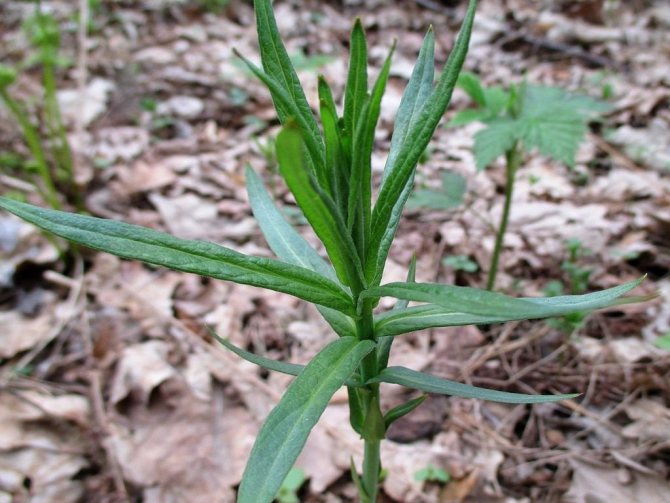

The composition and benefits of flowers and leaves for the body
The useful and medicinal properties of the willow-tea plant are determined by its rich composition, and all its parts are used: leaves, flowers, roots. They have a high concentration of vitamins (C, PP), minerals (copper, iron, magnesium, calcium, etc.), as well as:
- tannins;
- flavonoids;
- tannin;
- proteins;
- pectin;
- fructose;
- essential oils;
- alkaloids.
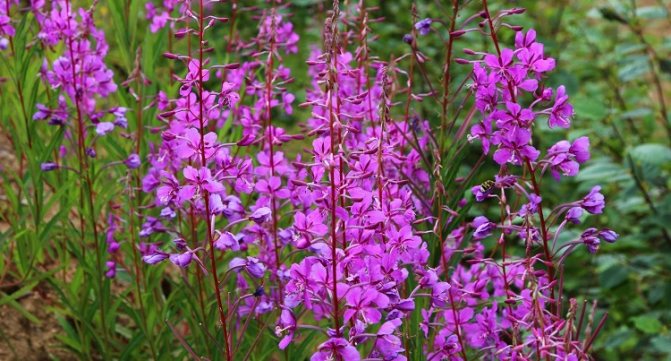

General beneficial properties:
- strengthens the immune system;
- cleanses the body of toxic substances;
- has an antipyretic effect;
- prevents the development of caries;
- strengthens the walls of blood vessels;
- restores physical and mental strength;
- has an anti-inflammatory effect;
- has a calming effect, fights insomnia, neuroses;
- pain reliever, effective for headaches, migraines;
- a natural antioxidant that prevents cell mutation, the formation of malignant tumors (cancerous);
- normalizes metabolic processes;
- stabilizes blood pressure, fights hypertension;
- used to remove poisonous, toxic substances from the intestines in case of poisoning;
- dissolves kidney stones.
Delicious chamomile tea, its harm and benefits, for what diseases doctors recommend using a healing drink, you will find out on our website.
All about the beneficial properties of red currant leaves, how to make the infusion correctly, read our special material.
And what is the use of raspberry leaf tea? What is the peculiarity of making tea, how to use it - read here.
A little from the history of narrow-leaved fireweed
It should be noted that since the 12th century in Russia, tea was very popular, for the preparation of which they used narrow-leaved fireweed. Ivan tea was collected by both simple peasants and representatives of wealthy noble Russian families.
Since the 13th century, the above plant has been called "Koporye tea". The fact is that Alexander Nevsky, on the site of the destroyed fortress, founded a small estate Koporye (located in the area of the later Petersburg province). It is on these sand dunes that the willow-tea plant has taken root very well. It was harvested by monks.
Once English sailors visited Koporye. They tasted this extremely tasty drink. They liked it so much that the narrow-leaved fireweed began to be ordered by rich people from Europe (England, France, Prussia).
Until the middle of the 19th century, Great Britain preferred exclusively this Russian Koporye tea. Even Indian and Ceylon drinks did not have such popularity.
At the end of the 19th century, the narrow-leaved fireweed was ousted from the European market. This was facilitated by two world events: the rapidly growing power of the East India Company and the First World War.
Where else is fireweed used
Fireweed is often used in cooking. Dried leaves are added to meat dishes, salads and soups as a flavorful condiment.Fresh young grass, like nettle, is added to borsch and other soups.
The thickets of fireweed near the apiary are irreplaceable. The plant is a good honey plant. Over the summer, bees will collect 400-800 kg of nectar from 1 hectare. Fireweed honey is very useful, it is rich in active substances and vitamins. It is recommended for strengthening the immune system, combating nervous breakdowns and insomnia. Freshly harvested honey is liquid and has a greenish-yellow color. After a few weeks, the product crystallizes and looks like whipped cream. Its aroma is very delicate, and the taste is pleasant, soft.
Decorating the garden, fireweed is planted in groups near the curb, in the background of the flower garden, in the rock garden, as well as on the high banks of fresh water bodies. The roots strengthen the soil well in ravines and embankments. Candle-like inflorescences form an airy pink haze over the thickets. The plant can be combined with umbrella flowers to achieve geometric variety.
Phytotherapy
The fact that decoctions and tinctures from the herb of narrow-leaved fireweed have a calming effect has been known for a long time. It is especially effective for migraines and neuroses, it even surpasses the well-known valerian in its medicinal qualities. If valerian simply calms and relaxes, then ivan tea can change for the better a person's activity at the level of reflexes. Also, doctors note that the plant fights well with the manifestation of seizures. Due to the large amount of tannin in fireweed, lotions based on it help wounds heal faster. For example, decoctions have shown excellent results in the treatment of eczema, atopic dermatitis, psoriasis. Also tinctures of Ivan tea are used in the treatment of peptic ulcers and other diseases of the gastrointestinal tract.
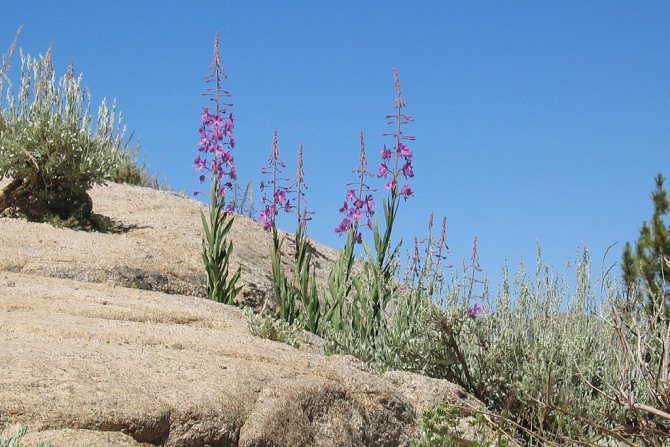

Reproduction methods
Ivan tea is propagated by seed and vegetative methods. Seeds are chosen fresh. In March, seedlings are preliminarily grown from them. To do this, prepare boxes with loose, fertile soil. A mixture of sand, peat and deciduous humus is suitable. Small seeds are spread on the surface, pressed lightly with a ruler and sprayed. The box is covered with transparent material and placed in a well-lit place with a temperature of + 18 ... + 25 ° C. Seedlings appear in 4-6 days. Seedlings with 2 true leaves are dived in separate pots. Planting in open ground, depending on the region, is carried out in May-June, when constant warm weather sets in. Before planting, the seedlings are hardened outside for a week. It should be planted on a cloudy day or with light rain so that the seedlings do not suffer from the hot sun. In the middle of summer, the length of the shoots will reach 10-12 cm. Flowering will come the next year.
For vegetative propagation, the method of dividing the rhizome is used. It is better to do this in early spring. A large plant is dug out on its own plot or in a forest glade. It must be remembered that horizontal shoots can be located 1.5 m from the main shoot. The excavated root is carefully cleared of the earth and the stolons are separated. Each division must have at least one growth point. The cut site is treated with ash and the cut is immediately planted in damp ground.


How to store
For storing willow tea, it is better to choose glass jars, but iron ones that close tightly are also suitable.
Having packed the blanks in a container, it is well closed and kept in this form for 2-3 weeks so that the grass is saturated with a floral aroma.
At the end of all these procedures, you can enjoy delicious, pleasantly smelling, healing tea.
The drink will be good by itself, but it is better to combine Ivan tea with other herbs - oregano, mint, lemon balm, add currant or strawberry leaves, as well as rose hips. This will only enhance the healing properties of fireweed.
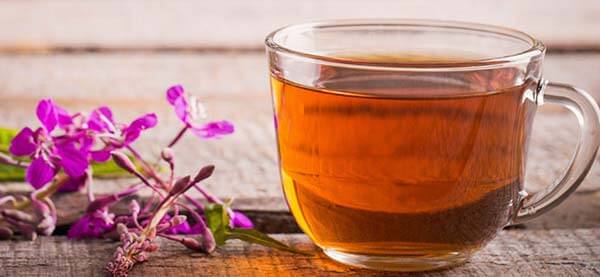

Photo of ivan-tea plant
Ivan tea has been famous for its unique properties since the time of tsarist Russia. And in the pre-war period there was a laboratory for the production of medicinal drinks according to old Russian recipes.Which was intended to save people from diseases and prolong youth. But in 1941, on the orders of the Fuehrer, the laboratory and fields codenamed "River of Life" were destroyed.
Is it good to drink a drink for men
What are the medicinal properties of ivan tea for men:
- increases male potency;
- increases physical endurance, restores strength;
- fights prostate adenoma;
- eliminates inflammatory processes of the genitourinary system;
- causes aversion to alcoholic beverages, is used to combat alcoholism.
An interesting fact: during the Second World War, Soviet scientists worked on the creation of a vaccine made from ivan tea, which was designed to significantly increase the endurance of the Red Army. The German leadership found out about this. On the offensive, it destroyed the secret laboratory and all employees.
Botanical description
Fireweed is a perennial, rarely an annual herb 40-150 cm high. The rhizome grows strongly in depth and width. It forms new growth points and numerous lateral shoots. Strongly branched stems are glabrous or densely pubescent. On them, up to the very top, next leaves grow close to each other. They sit tightly on the stem or have short petioles.
Oval or linear leaf plates are pointed at the end. They are 4-12 cm long and 7-20 mm wide. Small teeth are located along the edge of a dark green or gray-blue leaf. The reverse side is often covered with a purple-red short pile.
In July, flowers bloom, collected in loose panicles at the top of the stem. They persist for 30-50 days. Small, regular corollas consist of 8 petals arranged in 2 rows. They are round or square in shape. The petals are white, pink or crimson. The flower diameter is 25-30 mm. Flowering is accompanied by a strong honey scent.
In August-September, the fruits ripen - fluffy curved seed pods, similar to pods. A tiny oblong seed with a smooth surface has long, thin villi resembling a crest. Ripe fruits open and the wind carries the seeds over long distances.
Watercolor and pastel beauty
Having considered how Ivan-tea looks like, you can already think over the composition of the future drawing and make a sketch with a simple pencil on paper. You also need to think about whether you want to paint this healing herb in color or let it remain in monochrome, thereby emphasizing its become. If you are still for the color, what will you choose: watercolor, gouache, acrylic or pastel? ..
Look at the gallery of pictures below, evaluate how the beauty of the fireweed flower is conveyed using different visual means, which do you like more, which is closer?


